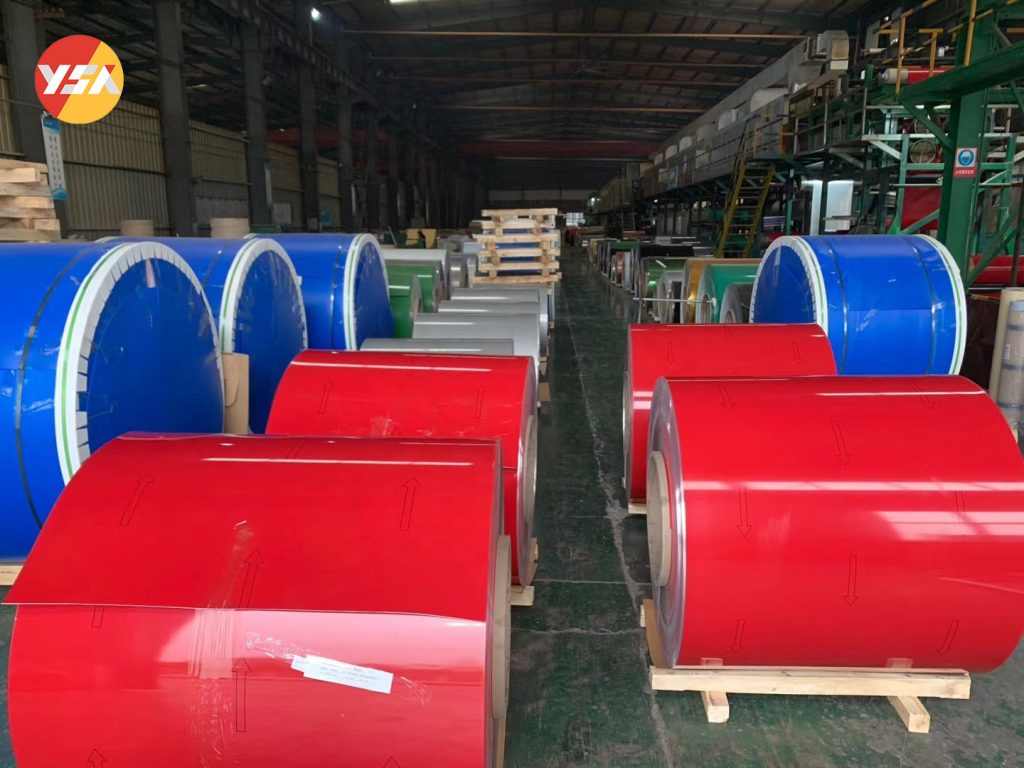Coated aluminum coil is an aluminum coil that has undergone special processing, with its surface covered by one or multiple layers of coating to enhance its weather resistance, corrosion resistance, and decorative properties. Below is a detailed explanation of the production process for coated aluminum coil, comprising five key steps:
Aluminum Coil Preparation
The production process of coated aluminum coil begins with the preparation of the aluminum coil. Firstly, high-quality aluminum alloy materials such as 1xxx, 3xxx, 5xxx, and 8xxx series aluminum alloys are selected for their excellent processability and corrosion resistance. Then, the aluminum coil undergoes surface treatment, including cleaning, removal of the oxide layer, and application of primer, to ensure the adhesion and uniformity of the coating.

Coating Formulation Preparation
The quality and performance of coated aluminum coil largely depend on the formulation of the coating. In this step, the coating formulation is prepared according to the product requirements and application scenarios. Typically, the coating comprises primer, coating agent, and topcoat, and each coating material’s formulation needs to be strictly controlled and tested to ensure it meets the product requirements such as weather resistance, corrosion resistance, and appearance.
Coating Process
Coating is one of the critical steps in the production process of coated aluminum coil. The coating process typically includes methods such as roller coating, spraying, or dipping. During the coating process, it is essential to ensure that the coating evenly covers the surface of the aluminum coil while controlling the thickness and uniformity of the coating. To enhance the adhesion and durability of the coating, pretreatment techniques such as chemical treatment, anodizing, or sandblasting are often employed to increase the surface roughness and adhesion of the aluminum coil.
Curing and Drying
Once coating is complete, the coated layer needs to undergo curing and drying to ensure the coating is fully cured and hardened. Curing is typically achieved through heating, which allows the solvents in the coating to evaporate and promotes cross-linking reactions, forming a robust coating. The drying process requires strict control of temperature, humidity, and time to avoid quality issues such as cracking, bubbling, or color differences in the coating.

Inspection and Packaging
The final step involves quality inspection and packaging of the coated aluminum coil. Quality inspection includes visual inspection, coating thickness testing, corrosion resistance testing, etc., to ensure the product meets relevant standards and customer requirements. Through rigorous quality control and inspection, the stability and consistency of the coated aluminum coil’s quality are ensured. Once inspection is complete, the coated aluminum coil is packaged according to customer requirements to prevent damage or contamination during transportation and storage.
Conclusion
The production process of coated aluminum coil involves five key steps: aluminum coil preparation, coating formulation preparation, coating process, curing and drying, and inspection and packaging. Each step requires strict control and management to ensure the coated aluminum coil has excellent quality and performance. Through precise process flow and quality control, coated aluminum coil can be widely used in construction, transportation, electronics, home appliances, and other fields, providing high-quality material solutions for various industries.


